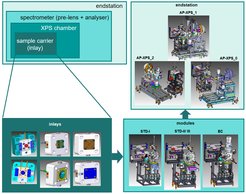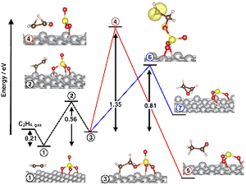Methods
Electronic structure group
In situ and operando near-ambient pressure XPS/XAS in the gas and liquid phase

In order to allow for the highest degree of experimental flexibility, we follow a modular approach with our setups: at each beamline, we have a stationary electron analyzer, to which different “modules” (vacuum chambers) can be attached. These modules are either dedicated to gas phase experiments or to electrochemical measurements. To each module, on the other hand, different “inlays” (e.g. sample holders or reaction cells) can be fitted, depending on the experimental needs. Such experiments can include heterogeneous catalysis in the gas phase as well as electrochemistry in the liquid phase. The foundations for these measurements were laid with the development of a differentially pumped hemispherical sector analyzer, which was carried out by our group in collaboration with the group of M. Salmeron in Berkeley, leading to a setup suitable to record photoelectron spectra in the presence of an increased pressure of (reacting) gas.

Theoretical research
As theory support is essential for the correct interpretation of XPS and XAS data, our group houses a significant number of theoreticians. Based on density functional theory, our state-of-the-art computations are not only used to obtain XPS binding energies for different surface species and adsorbate structures, or to relate X-ray absorption spectra to different molecular configurations (both in the liquid phase and in gaseous reactions); they also allow to obtain information about the energetics of different reaction pathways or to predict thermodynamic stabilities of different states.

